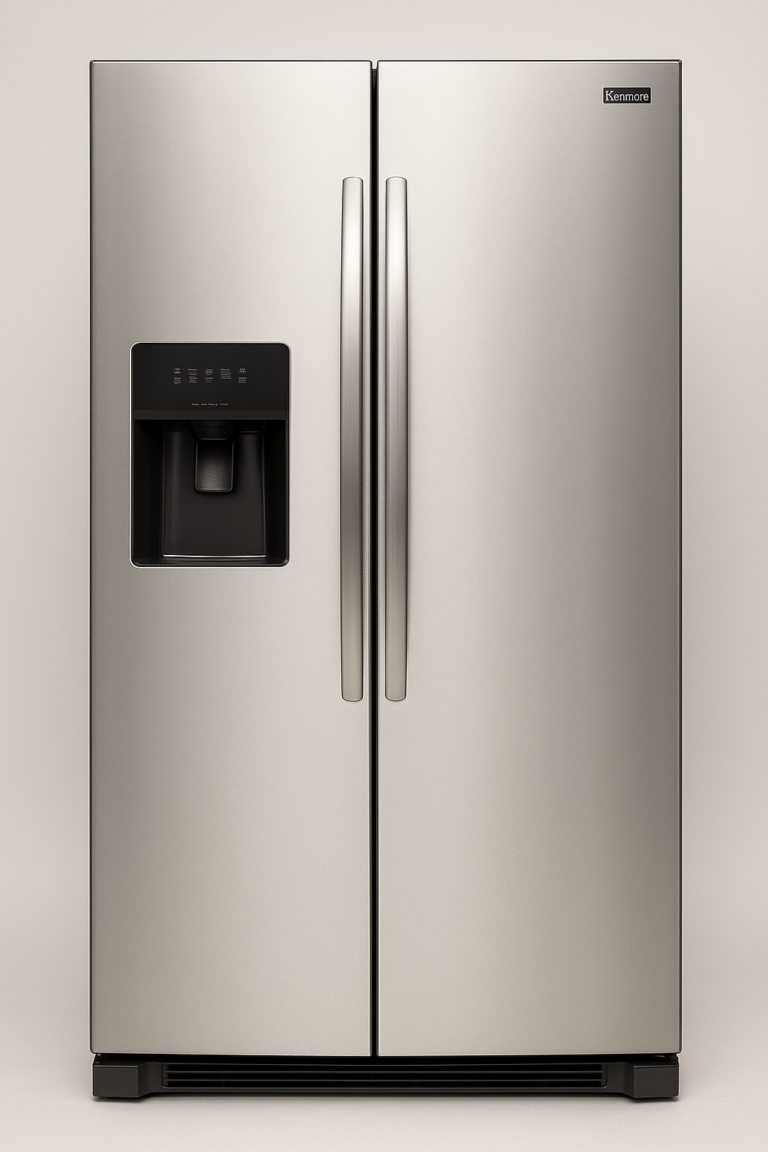If you own a Scotsman ice maker in Houston, knowing how to clean it properly can save you from breakdowns, dirty ice, and high repair costs. In this article, we walk you through a real case of cleaning a Scotsman SCN60PA-1SU nugget ice machine in Bellaire (ZIP 77401), highlighting key steps, tools used, and the results achieved. Whether you’re using your ice maker for daily drinks or summer parties, this guide explains exactly why proper maintenance is essential in Houston’s intense heat.
At HomeFix Appliance Repair, we see it every year—ice machines producing less ice, running louder, and, in some cases, shutting down altogether due to neglect. Recently, we completed a full internal and external cleaning on a Scotsman SCN60PA-1SU residential nugget ice machine in Bellaire (ZIP code 77401), a neighborhood in southwest Houston. This service revealed just how deceptive appearances can be.
This guide will show you how professional cleaning helps your Scotsman ice maker run cooler, produce cleaner ice, and last longer—especially in Houston’s extreme summer heat.
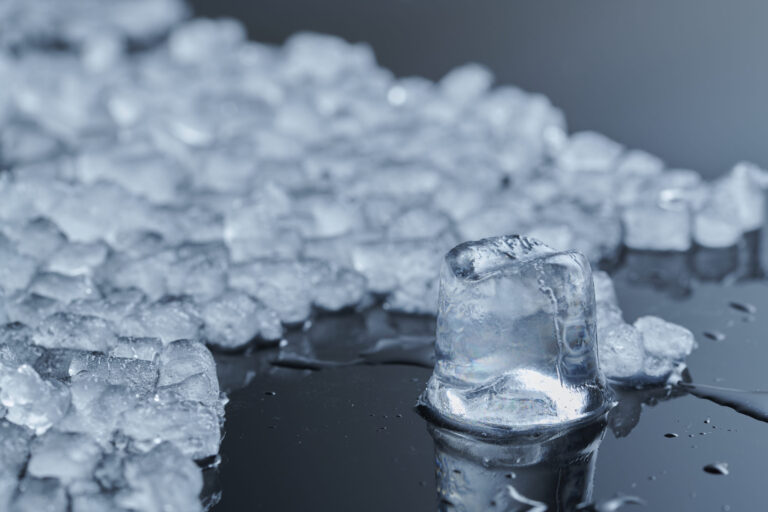
Why Ice Machine Maintenance is Critical in Hot Weather
Let’s start with the obvious: hotter temperatures mean your ice machine has to work harder. When temperatures in Houston hit the upper 90s or even triple digits, the machine’s internal components—particularly the compressor and condenser coil—must run longer cycles to keep producing and storing ice.
Without routine maintenance, mineral buildup, dust accumulation, and microbial growth start to affect performance. And that can lead to costly repairs or even early replacement of your machine.
Moreover, the ice produced in a dirty machine is not safe. Bacteria, mold, or mineral flakes can end up in your drinks. That’s why it’s important to schedule regular cleaning and ice machine descaling, especially before the summer.
The Machine: Scotsman SCN60PA-1SU Nugget Ice Maker
This model is a favorite for producing soft, chewable nugget ice, also known as “Sonic-style” or “pellet ice.” It’s compact, powerful, and designed for both home and light commercial use.
Despite its high performance, like any other unit, the Scotsman SCN60PA-1SU needs regular cleaning. This model is equipped with a control panel that will notify you with a yellow light when it’s Time to Clean—a feature often ignored or misunderstood by users.
When we arrived, the unit appeared functional. It was producing ice and had a clean exterior. However, as you’ll see below, a closer inspection told a very different story.
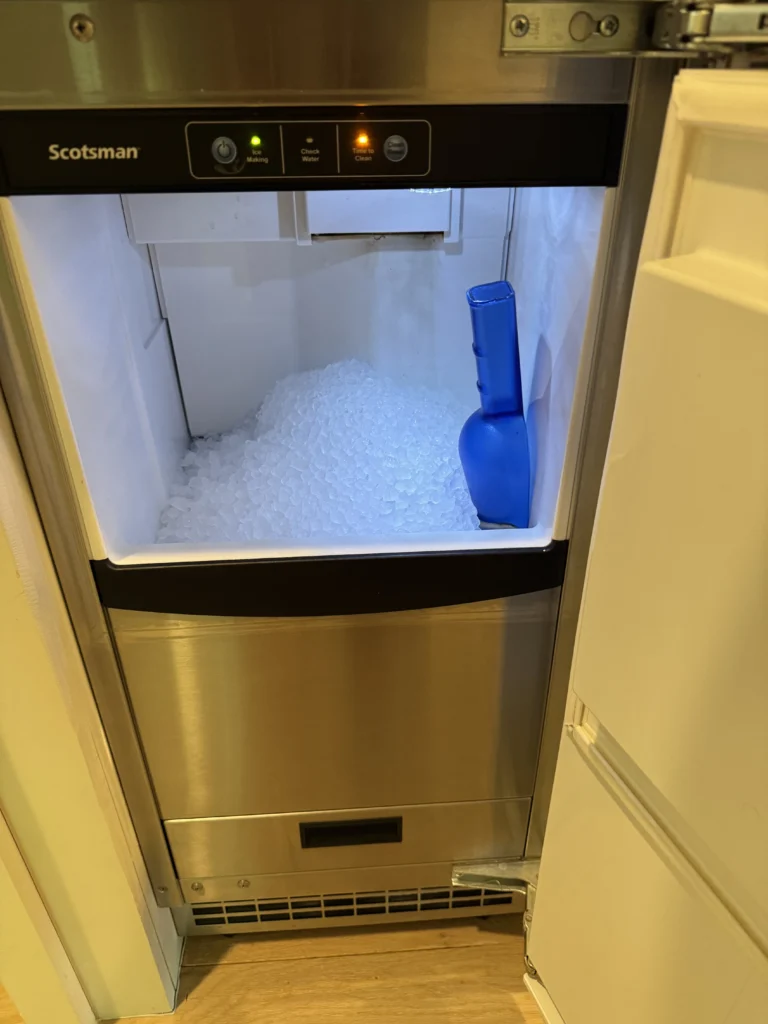
Step-by-Step Cleaning Process: A Case Study in Bellaire, Houston 77401
External Inspection and Diagnostics
The ice bin was full, and the machine was still making ice. However, the “Time to Clean” light had been on for several weeks. That was the first red flag.
Upon removing the lower kickplate, the condenser coil was immediately inspected. What we found was a thick blanket of dust and lint. Though often overlooked, this buildup can severely limit the heat exchange process and lead to overheating.

Condenser Coil Deep Cleaning
To clean the condenser, we used a non-acidic, foaming condenser coil cleaner. Why foam? Because foaming cleaners cling to the coil surface and penetrate deep between the fins, lifting out dust and debris more effectively than water alone.
The foam was applied generously and allowed to sit for five minutes. Then, the coil was carefully rinsed with low-pressure water to avoid bending the fins. The results were instant: air was flowing more freely, and the unit’s cooling efficiency improved immediately.
This step alone can reduce strain on the compressor and extend the life of the unit.
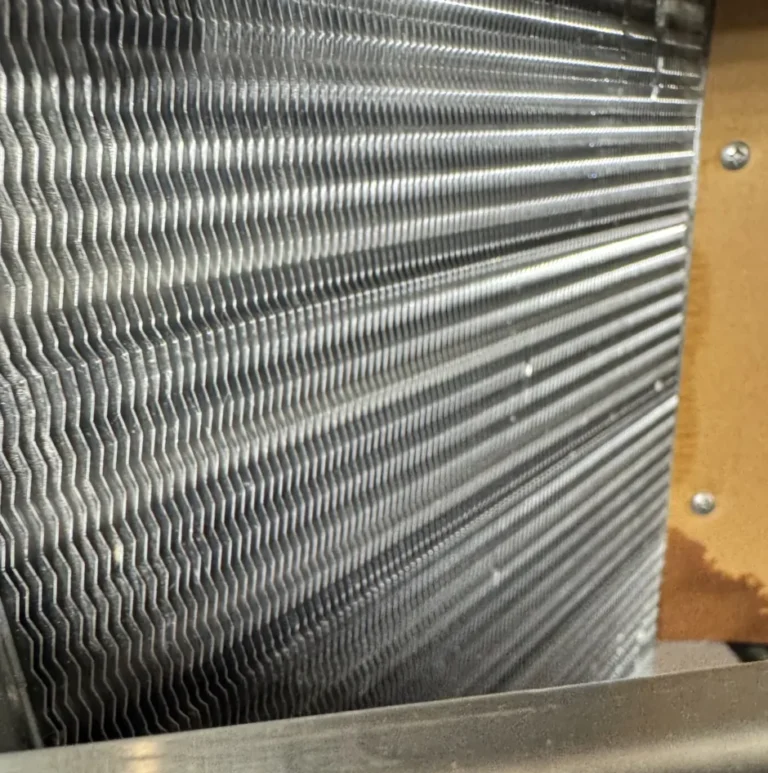
Internal Scale Buildup Removal
Next, the ice-making system was opened for an internal inspection. Behind the rear wall of the bin, we discovered heavy mineral scale deposits on the auger housing and evaporator base. This type of buildup occurs when hard water passes through the system over time.
To remove the scale, we used Scotsman’s Clear 1 Scale Remover, a food-grade, nickel-safe descaling solution approved for this machine. This is important: never use general-purpose cleaners on ice machines. They can corrode nickel-plated parts and damage sensors.
The scale remover was added to the reservoir, and the system was set into cleaning mode. During the cycle, we continued to top off the reservoir to maintain the correct fluid level, as specified in the Scotsman SCN60PA-1SU service manual.
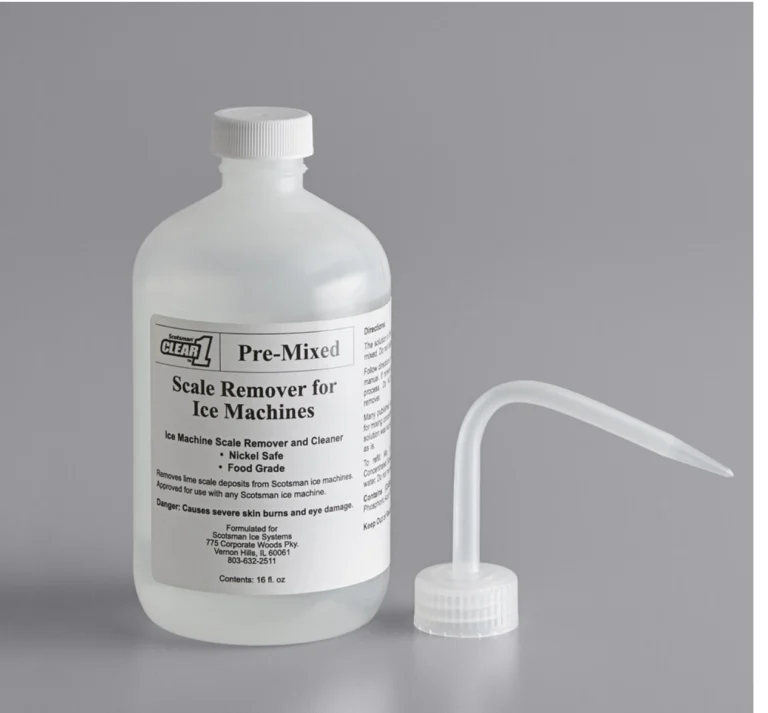
Drain and Rinse
After the cleaning cycle, the system was drained completely. Then, a full gallon of hot water (around 100°F) was poured into the bin to flush out any remaining solution. This step is critical to prevent residual chemicals from mixing with newly formed ice.
Sanitization of Ice Bin and Components
We then turned our attention to the ice bin interior, which had a noticeable black film and residue near the drainage hole. This biofilm can be caused by a mix of stagnant water and warm temperatures—ideal conditions for microbial growth.
Using a sanitizing solution safe for food contact surfaces, we scrubbed the interior, ice scoop holder, and scoop. After drying, the bin looked almost new. More importantly, it was hygienically safe for ice storage
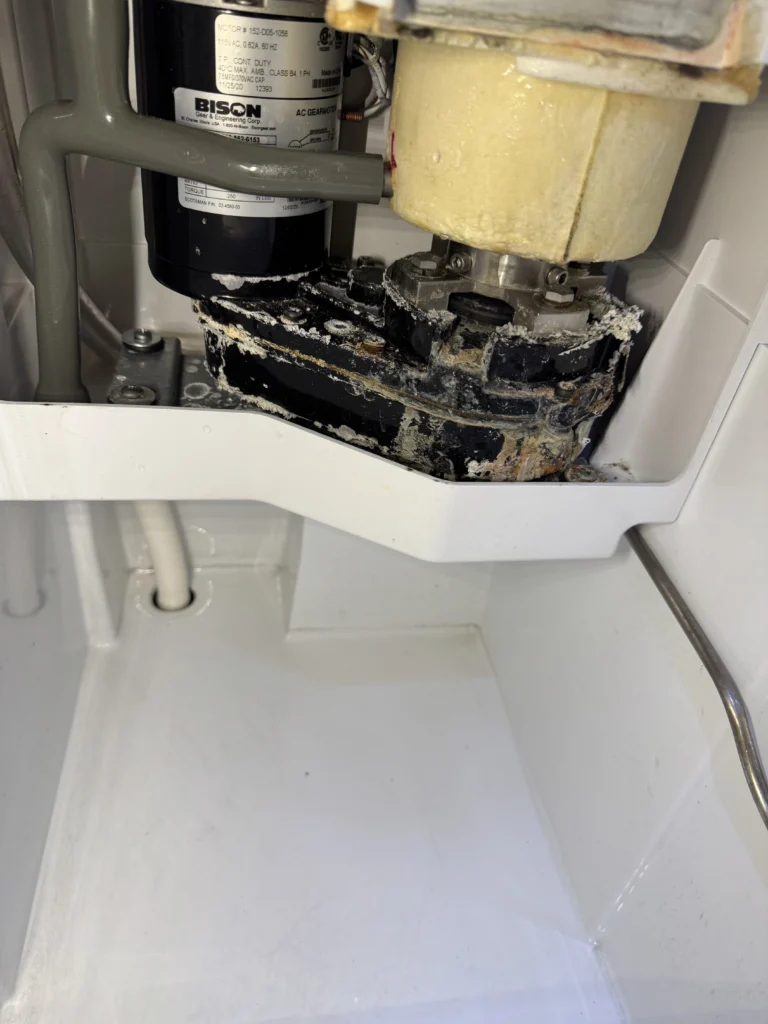
What Happens If You Don’t Clean Your Ice Machine?
It’s tempting to believe that if the ice looks clean, the machine must be clean. Unfortunately, that’s far from true.
If regular maintenance is skipped, you risk:
Lower Ice Output: Scale on the evaporator reduces freezing efficiency.
Cloudy or Smelly Ice: Mold and bacteria may contaminate the ice.
Mechanical Failure: A dirty condenser coil overworks the compressor.
Increased Utility Bills: Longer cooling cycles consume more electricity.
Shorter Appliance Lifespan: Neglect accelerates wear on internal parts.
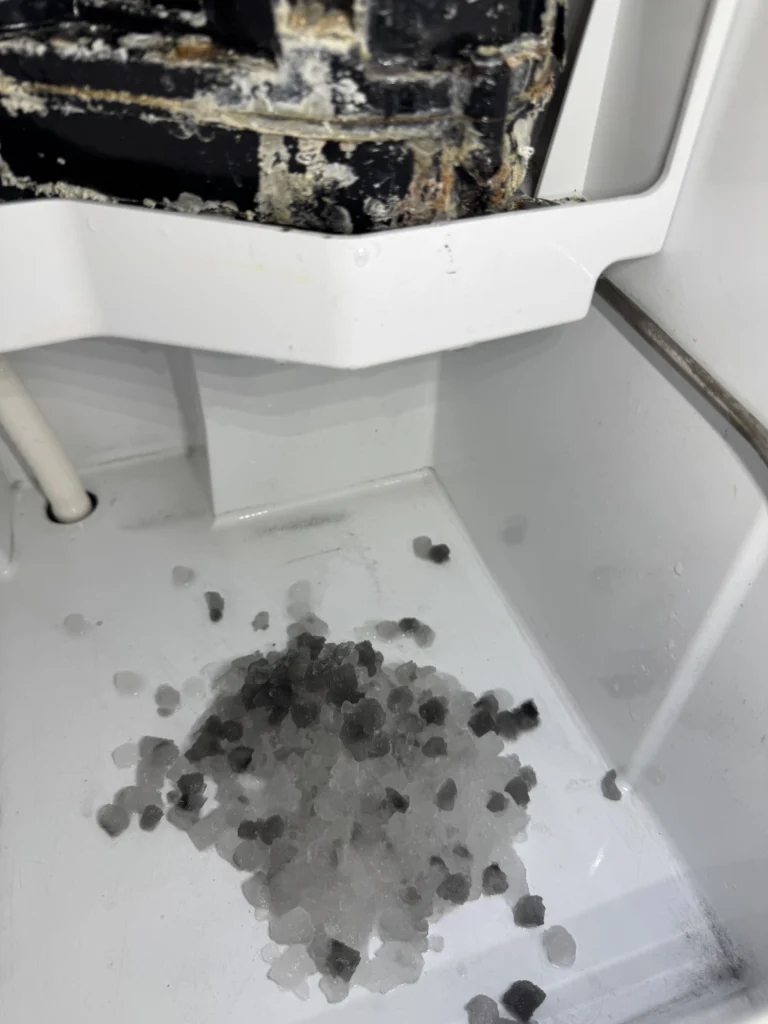
Brands We Frequently Service in Houston
While this case focused on a Scotsman, we often clean and repair units from:
KitchenAid – common in upscale residential kitchens
JennAir – high-end but often overlooked for regular maintenance
Whirlpool – popular models with minimal cleaning alerts
All of them benefit from a similar approach to coil cleaning, descaling, and bin sanitization.
Our Recommended Cleaning Schedule for Houston Homes
Due to high humidity and hard water in the Greater Houston area, including Bellaire (ZIP 77401), we suggest:
Deep cleaning every 6 months
Sanitizing every 3 months
Condenser coil checks every 2 months
Filter replacement if equipped, every 6–12 months
This ensures top performance through the summer heat and beyond.
Signs It’s Time to Schedule Service
Don’t wait until your machine breaks down. Contact us if you notice:
Ice has a strange smell or taste
The “Time to Clean” light stays on
Ice output is smaller or irregular
Loud noises or vibration during operation
Water leaks around the unit
Final Thoughts: Protect Your Investment
This real-world example of a Scotsman SCN60PA-1SU ice maker in Bellaire shows how misleading appearances can be. The bin looked clean—but internal scale, a clogged coil, and biofilm made the system inefficient and unhygienic.
Routine professional maintenance improves ice quality, increases efficiency, and extends the life of your machine.
For expert ice machine cleaning in Houston, including Bellaire, Memorial, Richmond, Katy, Sugar Land, and Fulshear, call the trusted team at HomeFix Appliance Repair.
Can You Clean a Scotsman Ice Maker Yourself?
Yes — but only the basics. Here’s what you can do:
Turn off the machine and disconnect power.
Remove and rinse the ice bin with warm water and mild soap.
Use a soft brush to clean visible mineral buildup or mold from plastic parts.
Vacuum the front grill to remove dust from the condenser coil area.
Restart and monitor ice production and clarity.
⚠️ If internal scale is visible or the “Time to Clean” light stays on — it’s time to call a certified technician. Specialized cleaning solutions and system flush are required.
Frequently Asked Questions
You can clean the bin and wipe down surfaces, but descaling and coil cleaning should be left to professionals. Specialized cleaners and tools are required.
It indicates the machine has reached a usage threshold and needs a cleaning cycle. It doesn't always mean it's dirty, but it should not be ignored.
Yes. Scale affects ice quality, clogs internal parts, and can cause premature failure of expensive components.
At least every 6 months for deep cleaning, and every 3 months for bin sanitization—especially in Houston’s hard water conditions.


